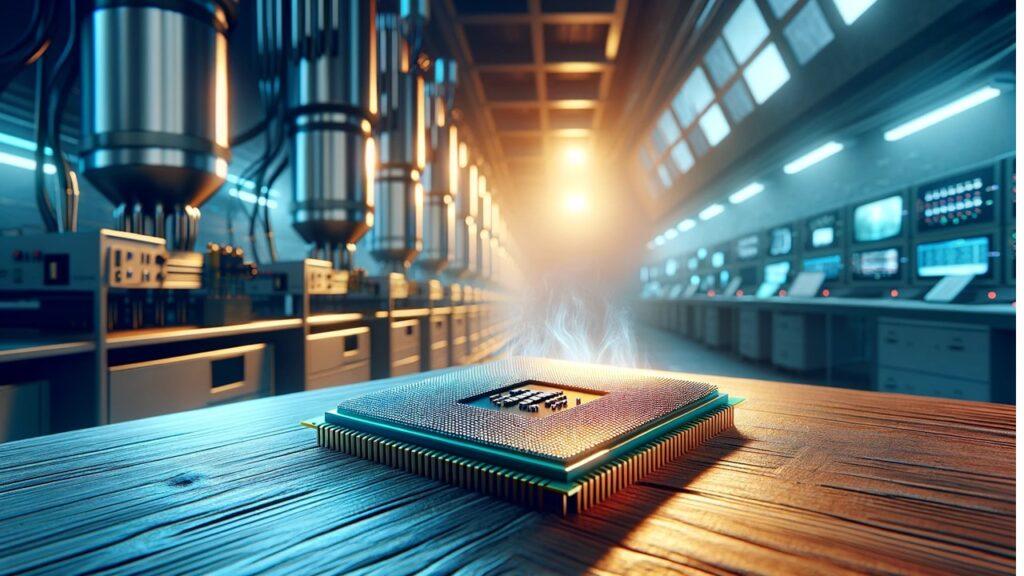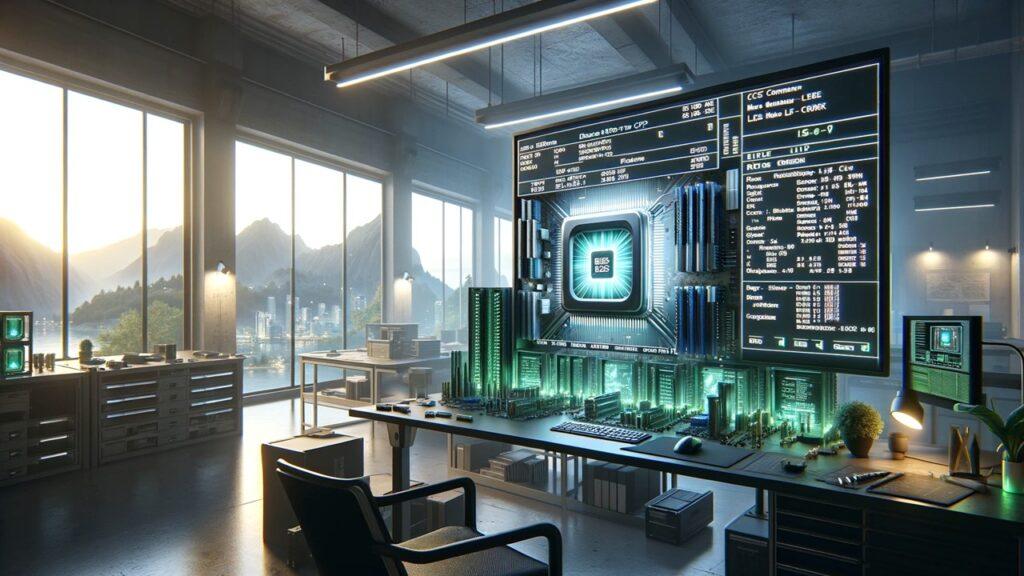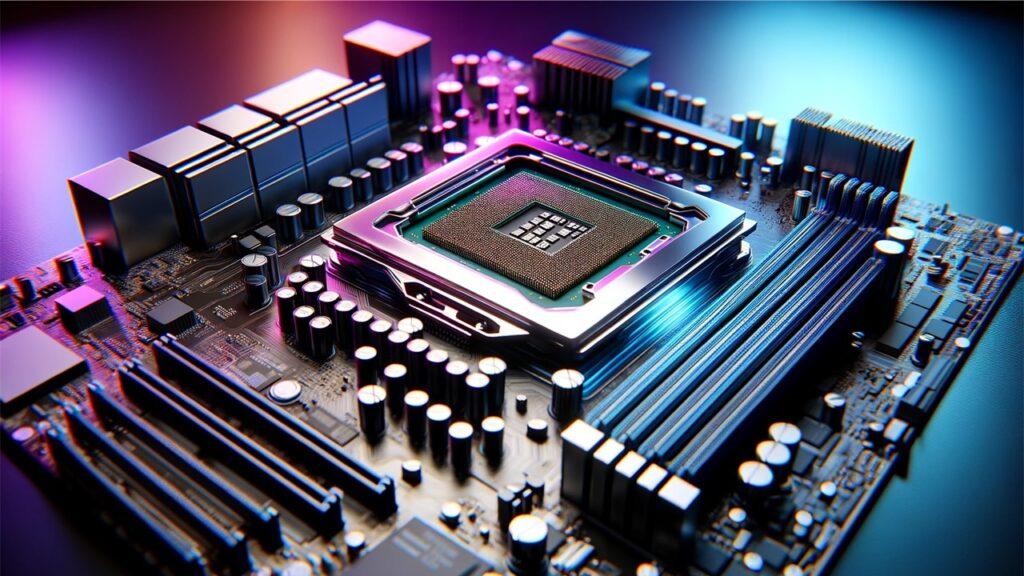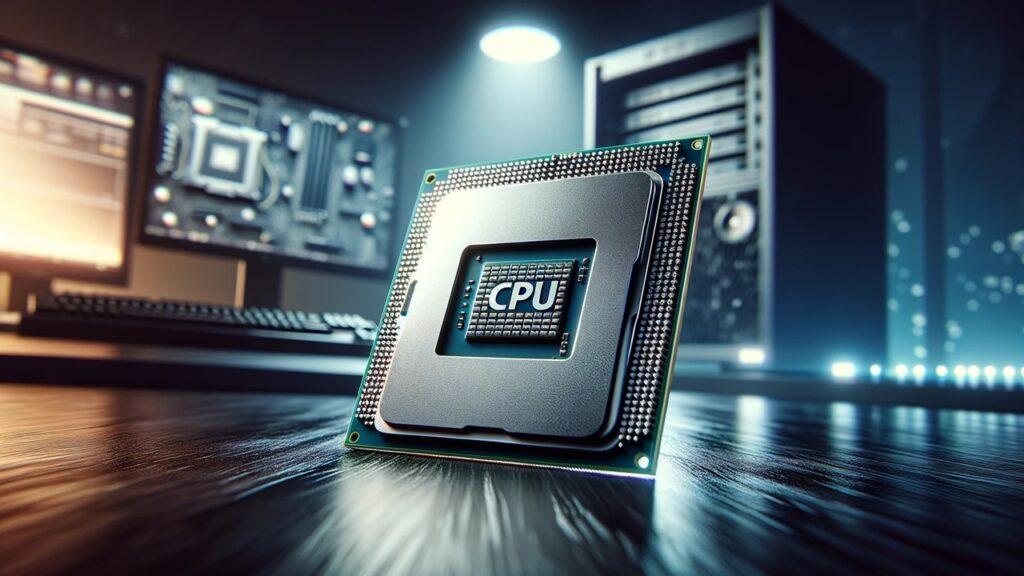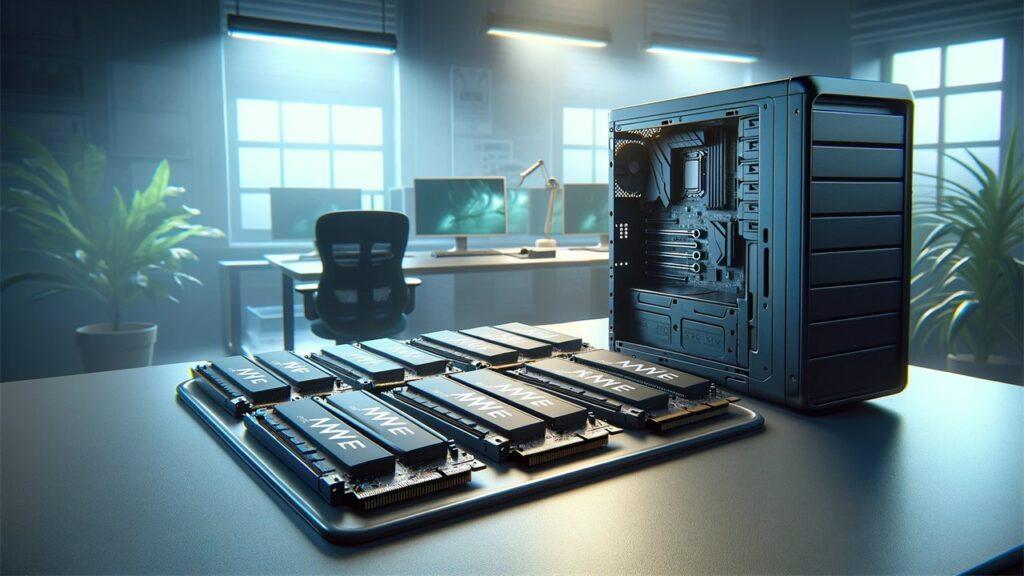Looking for the best CPUs for overclocking in 2025? After testing dozens of the latest Intel and AMD processors, it’s clear that some chips deliver far better control, efficiency, and thermal stability than others. Whether you’re fine-tuning clock speeds for gaming or squeezing out extra rendering performance, choosing the right CPU can transform how your system performs under pressure.
The Intel Core i9-13900K delivers incredible headroom for performance tuning, while the AMD Ryzen 9 7950X3D excels in multi-threaded tasks with outstanding efficiency. The Intel Core i5-12600K gives budget builders a reliable overclocking platform, and the AMD Ryzen 5 7600X strikes a perfect balance between speed and value. Meanwhile, the AMD Ryzen 9 7900X3D combines strong performance with great price-to-power potential.
In this guide, we’ve compared these CPUs across real-world overclocking performance, temperature handling, and value to help you find the right processor for your next high-performance PC build in 2025.
We’re reader-supported. When you buy through links on our site, we may earn an affiliate commission. As an Amazon Associate, we earn from qualifying purchases at no extra cost to you.
Best CPUs for Overclocking PC Build: Our Top 5 Picks
1. Best Overall Option: Intel Core i9-13900K
2. Best AMD Option: AMD Ryzen 9 7950X3D
3. Best Budget Overclocker: Intel Core i5-12600K
4. Best Mid-Range Option: AMD Ryzen 5 7600X
5. Best Value Option: AMD Ryzen 9 7900X3D
1. Best Overall Option: Intel Core i9-13900K

Quick Specifications
- CPU Model: Core i9-13900K
- Cores/Threads: 24 (8 P-cores + 16 E-cores), 32 threads
- CPU Speed: Up to 5.8 GHz
- CPU Socket: LGA 1700
- Cache: 36MB
In our experience, the Intel Core i9-13900K stands out as a formidable contender for overclocking enthusiasts and gamers alike. With its hybrid architecture featuring 24 cores, this CPU pushes the boundaries of what’s possible in a PC build, delivering exceptional performance across gaming, streaming, and creative workloads. Furthermore, its capability to reach speeds of up to 5.8 GHz when unlocked makes it a powerhouse for anyone looking to maximize their PC’s potential.
Moreover, the integration of Intel UHD Graphics 770 and compatibility with both DDR5 and DDR4 memory offers a versatile and potent combination for diverse PC setups. This processor’s adaptability with Intel 600 and 700 series chipset-based motherboards, after a potential BIOS update, further solidifies its position in our list as a top pick for 2025 overclocking builds.
Pros
- Hybrid architecture optimizes both multitasking and single-threaded performances.
- Up to 5.8 GHz unlocked speed for peak overclocking potential.
- Supports latest DDR5 memory for future-proofing your build.
- Integrated graphics provide a valuable backup or standalone solution.
Cons
- May require a BIOS update for optimal compatibility with some motherboards.
- High performance comes with a considerable power demand (125W base power).
From our standpoint, the Intel Core i9-13900K provides an impressive blend of cutting-edge technology and raw power, making it an excellent choice for anyone looking to build an overclocking-capable PC. Its prowess in pushing the limits of gaming, video editing and content creation, alongside the strategic advantage of having both high-core count and top-tier speed capabilities, places it at the forefront of our recommendations. Thus, for those seeking a robust, future-proofed foundation for their overclocking endeavors, the Intel Core i9-13900K emerges as an unparalleled option in our curated selection in our opinion.
2. Best AMD Option: AMD Ryzen 9 7950X3D
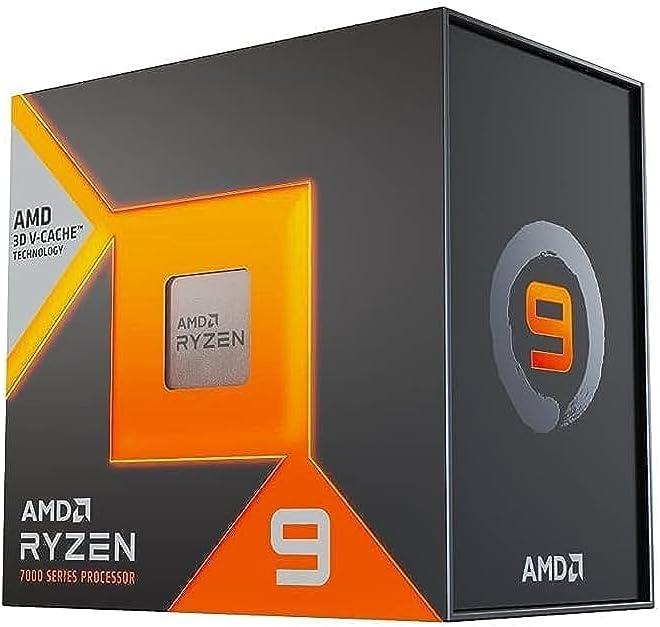
Quick Specifications
- CPU Model: Ryzen 9 7950X3D
- Cores/Threads: 16 Cores, 32 Threads
- CPU Speed: 4.2 GHz
- CPU Socket: AM5
- Cache: 128 MB L3
In our view, the AMD Ryzen 9 7950X3D has remarkably set the bar for overclocking enthusiasts looking towards 2025. With its 16-core configuration, this powerhouse not only promises but delivers exceptional prowess in gaming, multitasking, and creative endeavors. Furthermore, its integration of AMD’s pioneering 3D V-Cache™ technology serves to amplify gaming performance significantly, offering a seamless and immersive experience.
Moreover, its generous 128 MB L3 cache is a standout feature, ensuring swift data access and processing, crucial for demanding tasks and applications. The inclusion of AMD Radeon Graphics within the processor itself provides a solid foundation for graphical tasks, easing the initial need for a separate graphics card for users on a tight budget or biding time for future upgrades.
Pros
- Stellar multi-threaded performance suitable for a wide range of intensive applications.
- Incorporates AMD’s 3D V-Cache™ technology for enhanced gaming performance.
- Comes with AMD Radeon Graphics, offering decent graphical output for everyday use.
- Built on the AM5 platform, ensuring readiness for future technological advancements.
Cons
- Base clock speed of 4.2 GHz might not dazzle against some high-frequency competitors.
- The premium performance level does come at a higher cost, which might stretch budgets.
From our perspective, our analysis positions the AMD Ryzen 9 7950X3D as an exceptional choice among our top selections for those keen on leveraging the latest in technology for their overclocking ventures. This CPU strikes an ideal balance between cutting-edge performance features and the flexibility for future upgrades, making it a prime candidate for gamers and content makers as well as video editors aiming to optimize their PC Builds. Its blend of advanced processing capabilities and integrated graphics solidifies its standing as a robust, versatile choice for any high-performance computing task in our opinion.
3. Best Budget Option: Intel Core i5-12600K
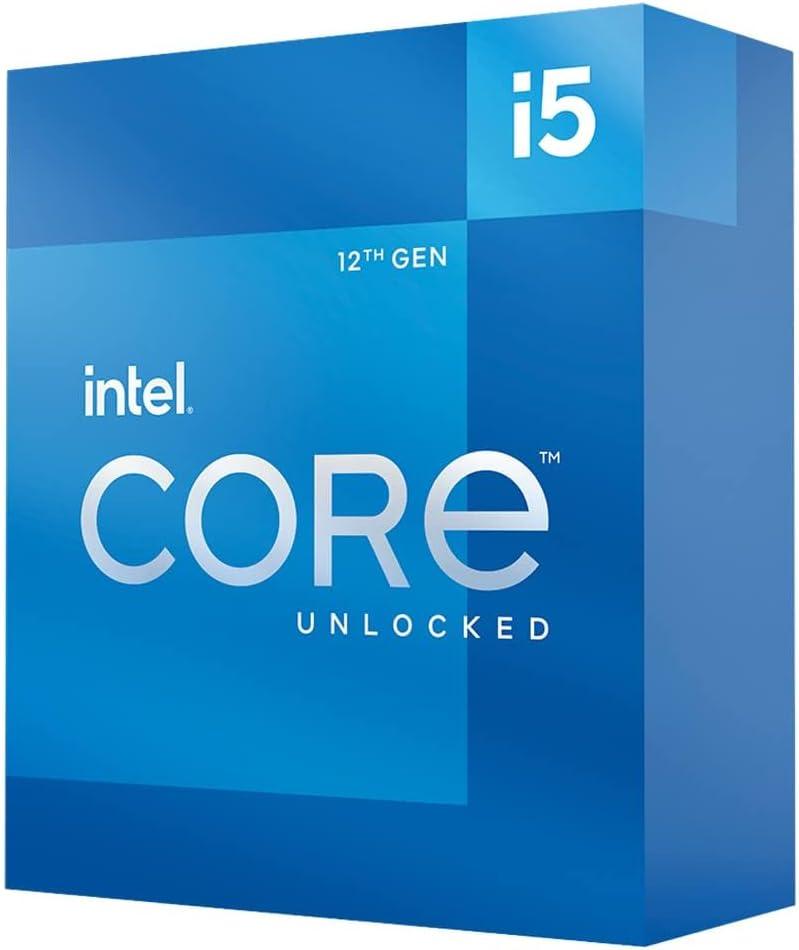
Quick Specifications
- CPU Model: Core i5-12600K
- Cores/Threads: 10 (6P+4E), 16 Threads
- CPU Speed: Up to 4.9 GHz
- CPU Socket: LGA 1700
- Cache: 20MB
From our standpoint, the Intel Core i5-12600K emerges as an undeniable champion for budget-conscious overclockers. Its blend of performance and price makes it an attractive option for those seeking to maximize their PC build’s potential without breaking the bank. Furthermore, the processor’s ability to multitask and handle demanding applications, thanks to its hybrid architecture, positions it as a versatile core for any PC build aiming for efficiency and power.
Moreover, the integrated Intel UHD 770 Graphics and compatibility with both Intel 600 and 700 series chipset-based motherboards ensure a smooth setup process and ample room for future upgrades. This CPU’s balance between performance and affordability showcases Intel’s commitment to catering to a wide range of consumers, solidifying its place in our curated list for overclocking enthusiasts.
Pros
- Exceptional multitasking capability with its 10-core setup.
- High peak speed of up to 4.9 GHz for superior performance.
- Includes integrated graphics, ideal for budget builds.
- Compatible with a wide range of motherboards for easy integration.
Cons
- Requires a discrete graphics card for heavy gaming or creative tasks.
- Some users may seek more cores for intensive multitasking needs.
In our perspective, our exploration positions the Intel Core i5-12600K as an impeccable choice for budget-conscious builders. Its proficient multitasking capabilities, coupled with a high peak speed and integrated graphics, provide a solid foundation for a variety of PC setups. Thus, for individuals aiming to delve into overclocking without straining their finances, the Core i5-12600K stands out as a balanced, efficient option in our selection, marrying cost-effectiveness with robust performance in our opinion.
4. Best Mid-Range Option: AMD Ryzen 5 7600X

Quick Specifications
- CPU Model: Ryzen 5 7600X
- Cores/Threads: 6 Cores, 12 Threads
- CPU Speed: 4.7 GHz
- CPU Socket: Socket AM5
- Cache: 38MB (6MB L2 + 32MB L3)
In our experience, the AMD Ryzen 5 7600X emerges as a stellar mid-range option for PC builders and overclockers alike. Its hexa-core design and 4.7 GHz speed offer a sweet spot of performance and affordability, making it an attractive choice for those looking to balance cost with capability. Furthermore, the processor’s 5 nm technology and substantial cache size ensure smooth and efficient operation, even under heavy loads.
Moreover, the Ryzen 5 7600X not only shines in raw performance but also boasts AMD Radeon Graphics, providing a competent graphical output for light gaming and multimedia tasks. This CPU’s compatibility with the latest AM5 socket also paves the way for future upgrades, ensuring your PC build remains relevant and powerful in the coming years.
Pros
- Impressive single-core and multi-core performance for the price.
- Integrated AMD Radeon Graphics suitable for basic gaming needs.
- Future-proof AM5 socket compatibility.
- Efficient 5 nm process technology maximizes performance per watt.
Cons
- Hexa-core design might limit performance in heavily threaded applications.
- Integrated graphics may not satisfy hardcore gamers’ demands.
From our standpoint, our insights affirm the AMD Ryzen 5 7600X as an impeccable mid-range pick for overclocking enthusiasts. Its judicious blend of price, performance, and forward-looking features makes it a prudent, versatile option in our lineup. Hence, for those seeking a robust foundation for their next PC build without venturing into the high-end market, the Ryzen 5 7600X stands out as a fitting, powerful choice that doesn’t compromise on future growth or efficiency in our opinion.
5. Best Value Option: AMD Ryzen 9 7900X3D
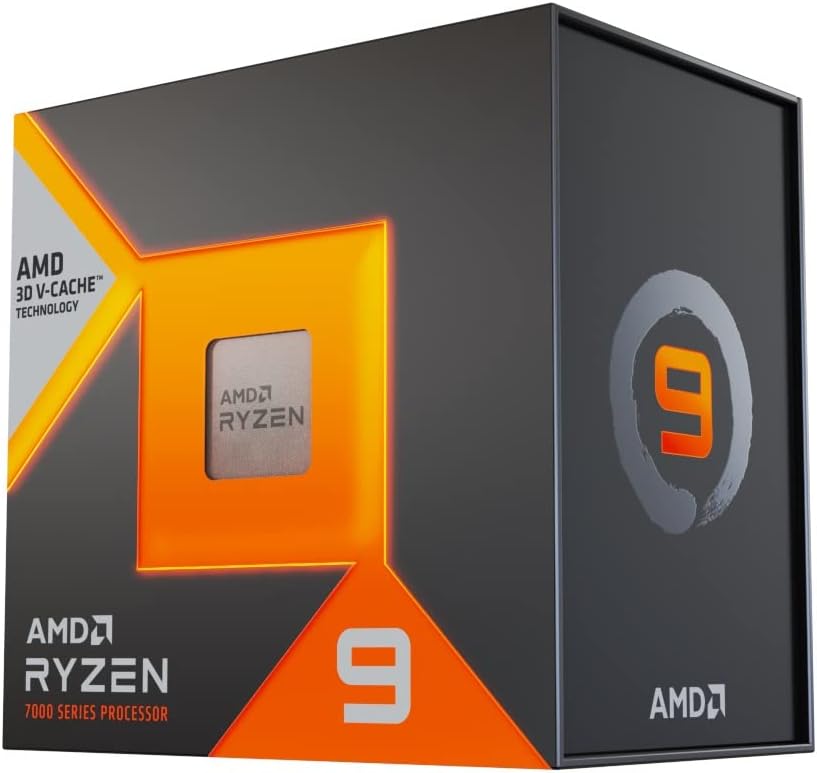
Quick Specifications
- CPU Model: Ryzen 9 7900X3D
- Cores/Threads: 12 Cores, 24 Threads
- CPU Speed: Up to 5.6 GHz
- CPU Socket: Socket AM5
- Cache: 140MB
In our exploration of the latest CPU offerings, the AMD Ryzen 9 7900X3D has clearly established itself as a standout for providing exceptional value. Its balance of high core count, substantial cache, and aggressive clock speeds positions it as a formidable choice for both gaming enthusiasts and content creators. Furthermore, the processor’s support for DDR5 and PCIe 5.0 on select motherboards ensures that users can leverage the latest technology to push their PC builds beyond traditional performance limits.
Moreover, the Ryzen 9 7900X3D’s architecture is a testament to AMD’s commitment to innovation, delivering unparalleled gaming performance with its 5.6 GHz boost clock and a massive 140MB of cache. This makes it not only a powerhouse for current applications but also a future-proof option that can handle the demands of next-generation software and games.
Pros
- Incredible 5.6 GHz max boost speed for peak performance.
- Massive 140MB cache enhances processing efficiency and speed.
- Supports the latest DDR5 memory and PCIe 5.0 technology.
- Offers great value for its price, given its high-end specifications.
Cons
- The high performance might require a robust cooling solution.
- PCIe 5.0 compatibility limited to select motherboards.
In our opinion, our assessment positions the AMD Ryzen 9 7900X3D as an outstanding selection for those seeking the utmost value from their CPU investment. Its exemplary blend of speed, cache size, and future-proof features make it a wise, potent choice for any serious PC builder or overclocker. Hence, for individuals aiming to assemble a high-performance PC that excels in gaming and content creation without overspending, the Ryzen 9 7900X3D emerges as a compelling, savvy option in our lineup, embodying both innovation and practicality from our perspective.
Overclocking and Its Benefits for PC Builds
In the world of PC Building, achieving peak performance often involves diving into the practice of overclocking. This technique is a game-changer for those aiming to push their PC Setups beyond the standard limits. The significance of choosing the right CPUs for Overclocking escalates with the advancements in technology and growing demands for superior computing power in areas such as gaming, content creation, and intensive computational tasks.
What is Overclocking?
Overclocking refers to the process of increasing a CPU’s clock speed beyond the factory settings. This adjustment of CPU multiplier, base clock, and voltage settings unleashes higher performance levels, converting a standard PC Build into a powerhouse of speed and efficiency. This practice is particularly appealing for those looking to maximize the performance of their High-Performance CPUs, allowing them to harness untapped potential for enhanced gaming, content creation, and other demanding applications.
Moreover, successful overclocking, supported by appropriate Cooling Solutions and stable power supply, can significantly elevate the capabilities of PC Builds, making it a strategic move for enthusiasts and professionals alike who are keen on maximizing their system’s performance.
Benefits of Overclocking in PC Setups
Overclocking extends beyond mere speed enhancements; it significantly boosts system responsiveness and overall performance. In gaming PC Builds, it can lead to better frame rates and smoother gameplay experiences, crucial for modern, demanding games. Furthermore, for tasks such as video editing and 3D rendering, overclocking can drastically cut down processing times, thereby boosting efficiency and productivity.
Moreover, overclocking offers an opportunity to breathe new life into older PC Setups, prolonging their usability and postponing the need for costly upgrades. It also provides enthusiasts with a deeper understanding of PC Building and system optimization, enriching their tech knowledge and skills.
The art of overclocking stands as a testament to the endless quest for performance in the world of PC Building. With carefully selected CPUs for Overclocking and the right setup, enthusiasts can transform their PC Builds into high-performance machines capable of meeting the demands of tomorrow’s software and games. The practice of overclocking is poised to offer even more exciting possibilities for enhancing system performance and user experience.
Do You Need CPUs for Overclocking PC Builds?
In the quest for greater PC performance, overclocking stands as a crucial consideration for enthusiasts and gamers. This practice involves pushing a CPU beyond its standard operational limits, aiming to boost the overall speed and efficiency of a PC Build. As 2025 approaches, the debate intensifies: Is investing in CPUs for Overclocking a necessity for your PC Setup? Here, we dissect the essence of overclocking and its implications for both performance and the lifespan of your system.
Evaluating the Need for Overclocking in Your PC Build
Determining whether your PC Build necessitates overclocking requires a nuanced understanding of your computing needs. Overclocking can significantly enhance the performance of High-Performance CPUs, making it a valuable strategy for demanding applications like gaming, video editing, and 3D modeling. However, it’s essential to weigh the benefits against your specific requirements. For casual users, the performance gains might not justify the potential risks and additional cooling solutions required.
Furthermore, the selection of CPUs for Overclocking should align with your long-term PC Building goals. If you aim for a setup that remains cutting-edge for years to come, investing in an overclockable CPU might provide the flexibility needed to keep pace with evolving software demands without frequent hardware upgrades.
Impact of Overclocking on PC Performance and Longevity
Overclocking has a profound impact on PC Performance, often leading to noticeable improvements in task execution speeds and overall system responsiveness. For PC Setups geared towards gaming and content creation, this can translate into more immersive experiences and reduced rendering times, respectively.
However, it’s critical to consider the longevity of your components. Overclocking increases thermal and voltage stress on CPUs, potentially reducing their lifespan if not managed with effective cooling solutions. Moreover, consistent high-performance workloads can wear out components faster, highlighting the importance of balancing overclocking with sustainable system health practices.
The decision to incorporate CPUs for Overclocking into your PC Build hinges on a careful assessment of your performance needs versus the potential impact on system longevity. Overclocking offers a pathway to enhanced performance, making it a compelling option for power users seeking to maximize their PC Setup. Yet, it demands a mindful approach to ensure that the pursuit of speed does not compromise the durability and reliability of your system components. The evolution of PC Building technologies will undoubtedly continue to shape the overclocking landscape, offering new opportunities and considerations for enthusiasts and professionals alike.
Selecting the Ideal CPUs for Overclocking Your PC Build
In the quest to maximize the performance of a PC Build, choosing a CPU that excels in overclocking is crucial. This decision involves more than merely opting for the highest clock speeds; it’s about finding a processor that meshes with your overclocking ambitions and the specifications of your system. As PC Building technologies advance, a deep dive into the characteristics and specs of CPUs designed for overclocking is indispensable. Here, we outline the critical aspects and specifications to consider, ensuring your selection leads to a harmonious and potent PC Setup.
Crucial Features in CPUs for Effective Overclocking
Identifying the right CPU for Overclocking hinges on several key features. An unlocked multiplier is paramount, allowing for the fine-tuning of the CPU’s frequency to achieve the desired performance levels. Equally important is the CPU’s core and thread count, which dictates its ability to manage multiple tasks simultaneously, a factor that’s vital for gaming and professional creative tasks.
The Thermal Design Power (TDP) and the associated cooling demands also merit careful consideration. CPUs with higher TDP values usually offer more overclocking potential but require advanced cooling solutions to keep temperatures in check. Additionally, the cache size, while often overlooked, plays a pivotal role in enhancing the processor’s efficiency and responsiveness, particularly under heavy loads.
Deciphering CPU Specifications for Overclocking Success
The significance of each CPU Specification becomes more apparent when tailoring your system for overclocking. Base and boost clock speeds set the stage for the processor’s performance, with higher values indicating more overclocking headroom. Nevertheless, surpassing the boost clock entails precise voltage adjustments, underscoring the necessity for robust voltage regulation and power delivery mechanisms to maintain system stability and performance.
Compatibility with Motherboard Chipsets and memory standards is another critical factor. Opting for a CPU that supports cutting-edge interfaces like PCIe 5.0 and DDR5 memory ensures that your PC Build remains ahead, allowing other components to complement the overclocked CPU’s performance without causing bottlenecks. Moreover, the manufacturing process, measured in nanometers (nm), impacts the CPU’s power efficiency and thermal output, with smaller nm sizes generally offering better efficiency and reduced heat generation.
The path to identifying the best CPU for Overclocking is marked by a thorough evaluation of both features and technical specs. For those eager to push their PC Builds to new heights, selecting a processor that not only aligns with high-speed demands but also fits within the ecosystem of your system’s cooling solutions and component compatibility is key. By focusing on these critical factors, enthusiasts are well-equipped to build a PC Setup that not only pushes the boundaries of performance but also stands the test of time, ensuring readiness for the most rigorous applications and games in the years to come.
Enhancing PC Builds with CPU Overclocking
Overclocking stands as a pivotal strategy for PC enthusiasts aiming to push their systems beyond conventional boundaries, offering a substantial boost in performance and responsiveness. This practice, while complex, can unlock the full potential of a PC Setup, particularly beneficial for demanding applications and gaming. Embarking on the overclocking journey requires a solid foundation, including a deep dive into preparation, the overclocking procedure itself, and adherence to crucial safety protocols. Let’s navigate through these key areas, ensuring you’re well-equipped to elevate your PC Build through overclocking.
Setting the Stage for Overclocking
The initial step in the overclocking process is to prepare your PC Setup adequately. This involves choosing an overclocking-capable CPU and Motherboard, a crucial pair that dictates the feasibility and extent of your overclocking ambitions. Additionally, robust Cooling Solutions are imperative to manage the increased heat production effectively. An up-to-date BIOS is also essential, offering optimized settings and functionalities to support overclocking efforts safely.
The Overclocking Procedure
Overclocking your CPU is a meticulous process that begins with accessing the BIOS to tweak the CPU Multiplier and incrementally increase the clock speed. Monitoring system stability and temperatures during this phase is crucial, employing stress-testing tools to identify the optimal balance between performance and stability. Incremental adjustments are paramount to finding the highest stable overclock, emphasizing patience and precision over haste.
Adhering to Overclocking Safety and Best Practices
Safeguarding your PC Build during and after overclocking is critical. Close temperature monitoring helps avoid overheating, while conservative clock speed increases and comprehensive stability tests ensure system integrity. Additionally, understanding the voltage thresholds of your CPU prevents the risk of overvolting, which could lead to irreversible damage. Following these guidelines not only protects your components but also secures a successful overclock.
CPU overclocking offers a pathway to significantly enhance the performance of your PC Build, making it more adept at handling intensive tasks and modern gaming. However, it demands a strategic and informed approach, focusing on preparation, careful adjustment, and strict adherence to safety practices. By doing so, you can unlock your system’s hidden potential, propelling your overclocking venture forward and achieving remarkable performance gains in your custom PC Setup.
Optimal Cooling Strategies for Overclocked CPUs in PC Builds
In PC Building, particularly for systems where overclocking is a key focus, implementing an effective cooling strategy is paramount. Pushing CPUs beyond their factory settings elevates performance but also significantly increases heat production. This guide aims to underscore the vital role that cooling plays in overclocked setups and to navigate through the diverse cooling options available to enthusiasts. Embracing the right cooling approach not only boosts performance but also acts as a critical safeguard for your system, ensuring that your overclocking ambitions don’t lead to overheating issues.
The Crucial Role of Cooling in Overclocked PC Configurations
Cooling transcends its basic function in overclocked PC Configurations, becoming an indispensable factor for operational stability and component longevity. Overclocking elevates the CPU’s thermal output, necessitating a robust solution to efficiently whisk away excess heat. Proper cooling solutions prevent the risk of thermal throttling, where the CPU scales down its performance to manage heat, thus maintaining the overclocked CPU’s enhanced performance. Moreover, maintaining optimal temperatures is key to preserving the health of the CPU over time, avoiding the potential thermal degradation of critical components.
Exploring Cooling Solutions for Enhanced Overclocking
For enthusiasts looking to cool their overclocked CPUs, the choice typically falls between air cooling and liquid cooling solutions.
- Air Cooling stands as the go-to option for many, favored for its straightforward design and affordability. It relies on a combination of a heatsink and fan to dissipate heat directly from the CPU into the surrounding air. Air cooling solutions are generally easier to install and maintain, suitable for moderate overclocking endeavors. However, their cooling efficiency might be challenged by higher ambient temperatures and restricted airflow within the case.
- Liquid Cooling, conversely, delivers exceptional cooling efficiency by circulating coolant in a sealed loop, transferring heat from the CPU to a radiator, where it’s expelled by one or more fans. Whether opting for an All-in-One (AIO) system or a bespoke custom loop, liquid cooling excels in managing higher overclocks, offering improved temperature management and often quieter operation compared to air cooling. Liquid cooling solutions can also add a visually striking element to a PC Build, though they typically require a higher budget and more meticulous maintenance.
Selecting the ideal cooling method hinges on several considerations, including the extent of overclocking, available budget, and personal preferences related to noise, aesthetics, and upkeep.
Cooling is a cornerstone of maintaining and enhancing the performance of overclocked PC Builds. Whether leaning towards the simplicity and cost-effectiveness of air cooling or the superior cooling capacity and aesthetic appeal of liquid cooling, the choice of cooling solution is pivotal in achieving a stable, efficient, and long-lasting overclocked system. By prioritizing effective heat dissipation strategies, overclockers can confidently elevate their CPUs’ performance, ensuring their setups remain cool and responsive under any load.
Ensuring Stability and Reliability in Overclocked PC Builds
Achieving an optimal balance between performance and stability in overclocked PC Builds is an art as much as it is a science. It involves pushing the limits of your CPU while ensuring that the system remains stable and reliable under load. This delicate balance requires a comprehensive approach, incorporating rigorous testing and ongoing monitoring to safeguard against potential issues. In this segment, we delve into the pivotal practices of stress testing and benchmarking, alongside the continuous monitoring and adjustment of overclocked setups, to maintain a high-performance yet stable PC Build.
Stress Testing and Benchmarking Overclocked CPUs
Stress testing and benchmarking are critical steps in validating the stability of an overclocked CPU. These processes involve running the processor under extreme conditions to simulate heavy usage, ensuring it can handle the increased demands without crashing or overheating. Tools like Prime95, AIDA64, and Cinebench are commonly used for this purpose, offering a thorough assessment of the CPU’s performance and thermal response under load. Furthermore, benchmarking provides valuable insights into the overclocked CPU’s performance improvements, allowing users to gauge the success of their overclocking efforts against standard metrics. Regularly conducting these tests after any adjustment ensures that the PC Build remains stable and performs optimally under various conditions.
Monitoring and Adjusting Overclocked PC Setups
Continuous monitoring is paramount for maintaining an overclocked PC Setup over time. This involves keeping a close eye on system parameters such as CPU temperature, clock speeds, and voltage levels, using software like HWMonitor or Core Temp. Monitoring ensures that the system operates within safe limits, helping to preemptively identify and mitigate potential issues before they escalate. Additionally, adjusting the overclocked setup based on these observations is crucial for optimizing performance and longevity. Tweaking settings like voltage and clock speed in response to stress test outcomes and system monitoring can enhance stability, reduce heat output, and even lower power consumption, contributing to a more reliable and efficient PC Build.
Maintaining stability and reliability in overclocked PC Builds demands a proactive and informed approach. Through diligent stress testing and benchmarking, enthusiasts can verify the stability and performance of their overclocked CPUs. Concurrently, ongoing monitoring and thoughtful adjustments play a vital role in preserving system health and ensuring that the overclock delivers the desired performance enhancements without compromising the setup’s longevity. Embracing these practices allows overclockers to enjoy the benefits of their high-performance builds with confidence, knowing that their systems are both powerful and resilient.
Dispelling Common Misconceptions About Overclocking
Overclocking, a term that resonates with ambition within the PC Building community, is often shrouded in myths that can deter newcomers. However, understanding the truths behind these misconceptions is key to harnessing the full potential of your PC Setup. Firstly, the belief that overclocking is reserved only for tech savants is widely misleading. With today’s user-friendly BIOS interfaces and comprehensive guides, the process of enhancing your CPU’s Performance has become accessible to enthusiasts at all levels.
Furthermore, the notion that overclocking severely shortens the lifespan of components is another area of misunderstanding. While it’s true that increased voltages and temperatures can affect component health, modern CPUs are built to withstand the rigors of overclocking when paired with adequate Cooling Solutions and sensible voltage adjustments. In addition, the fear that overclocking voids warranties is not always accurate. Many manufacturers now offer CPUs specifically designed for overclocking, acknowledging and supporting the practice under warranty conditions.
Moreover, the idea that overclocking results in unstable systems is not a foregone conclusion. Through meticulous Stress Testing and Benchmarking, overclockers can achieve stable and reliable performance enhancements. By dispelling these myths, the path to unlocking extra performance from your PC Build becomes clearer, allowing for a more informed and confident approach to overclocking. Embracing this knowledge not only elevates your system’s capabilities but also enriches your overall PC Building experience.
Wrapping It Up!
In the dynamic arena of PC Building, selecting the right CPUs for Overclocking emerges as a cornerstone for enthusiasts keen on pushing the boundaries of performance. This comprehensive exploration underscores the transformative impact that a well-chosen CPU can have on overclocked PC Builds, elevating them from mere assemblies of hardware to powerhouse setups capable of tackling the most demanding tasks and games. Furthermore, the journey through preparation, cooling strategies, stability measures, and debunking common misconceptions illuminates the path to successful overclocking, demystifying the process and highlighting its accessibility.
Moreover, the importance of meticulous Stress Testing, Benchmarking, and continuous monitoring has been underscored, showcasing these practices as vital for ensuring the longevity and reliability of overclocked systems. Additionally, the exploration into cooling solutions—from Air Cooling to Liquid Cooling—reveals the critical role of temperature management in achieving and sustaining peak performance.
In essence, the right CPU not only serves as the heartbeat of an overclocked PC Build but also as the linchpin of its overall potential and performance. By embracing the insights and strategies discussed, enthusiasts can navigate the complexities of overclocking with confidence, assured in the knowledge that their choices are informed, their setups are optimized, and their PC Builds are primed to deliver exceptional performance. Thus, the journey of overclocking becomes not just about enhancing a system’s speed but about unlocking a new realm of possibilities for PC Builders, enabling them to realize the full potential of their technological endeavors.
Related FAQs
What Makes a CPU Good for Overclocking?
A CPU is good for overclocking if it has an unlocked multiplier, high thermal tolerance, and robust power delivery capabilities.
Can Any CPU Be Overclocked?
Not all CPUs can be overclocked; only those with an unlocked multiplier, typically denoted by an “K” or “X” in their model name, are designed for it.
Does Overclocking a CPU Reduce Its Lifespan?
Overclocking can reduce a CPU’s lifespan if done excessively without proper cooling and voltage control, but moderate overclocking with adequate cooling usually has minimal impact.
Is Cooling Important for Overclocking CPUs?
Yes, effective cooling is crucial for overclocking, as it helps manage the increased heat output and ensures stability and performance.
How Much Performance Gain Can I Expect From Overclocking a CPU?
Performance gains from overclocking a CPU vary, typically ranging from 5% to 20%, depending on the specific CPU and the extent of the overclock.

Josh is a lifelong tech enthusiast with a passion for building powerful, reliable PCs. With years of hands-on experience, he shares practical advice to help readers make smarter choices, whether it’s picking the right components or solving build issues at home. Josh focuses on what really matters in real-world use, offering honest insights that come from testing, tinkering, and learning along the way. He’s here to make tech feel a little less overwhelming and a lot more useful.


